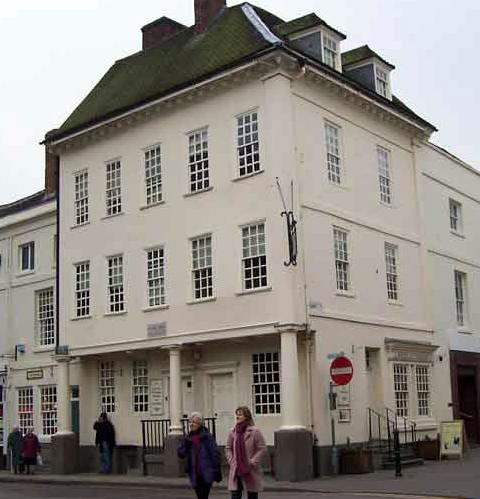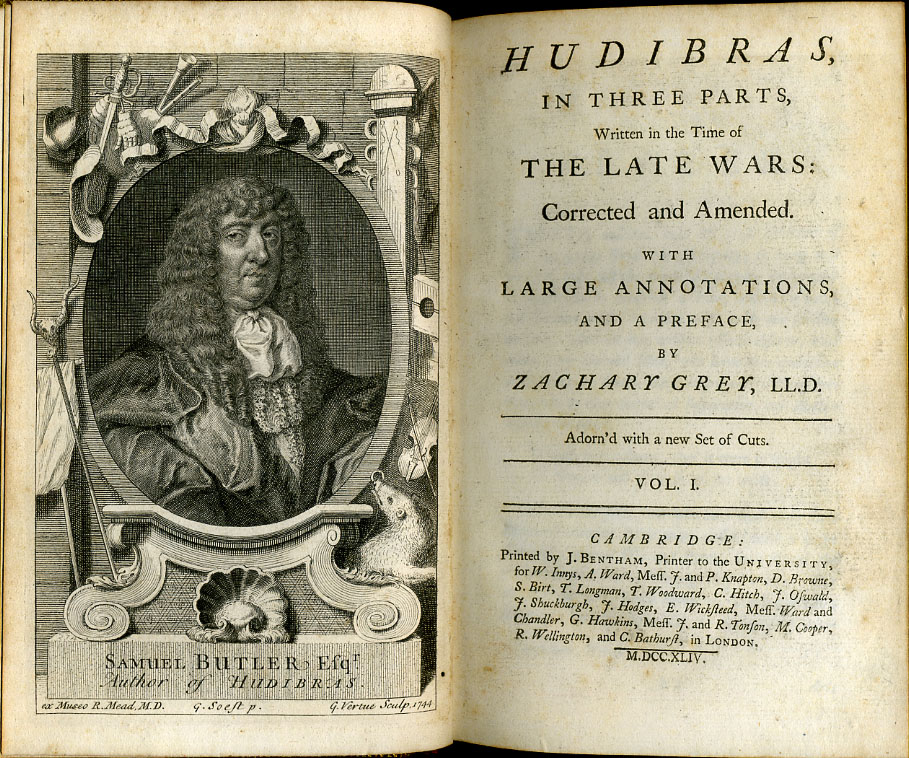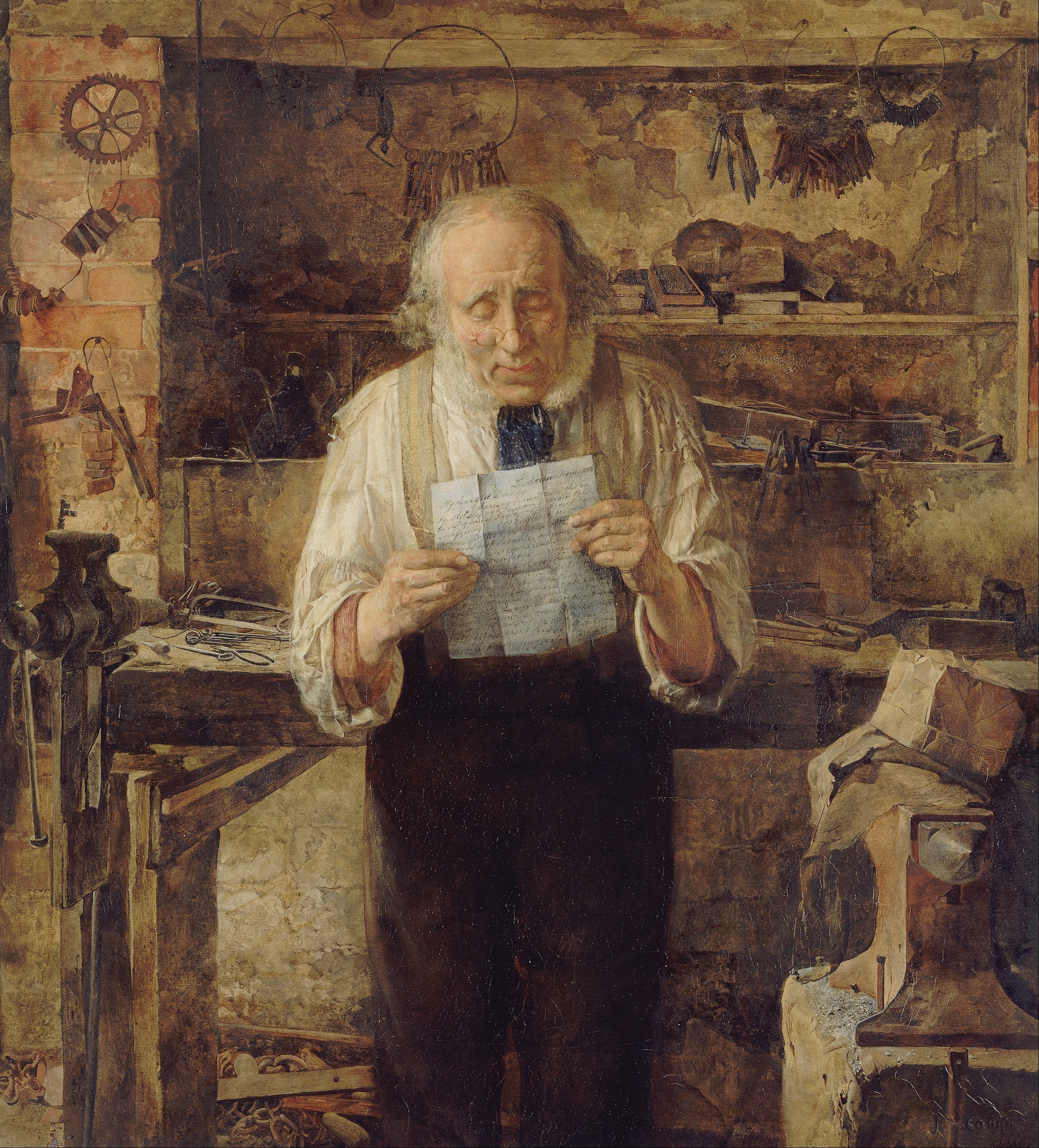|
Robert Thyer
Robert Thyer (1709– 27 October 1781) was an 18th-century British writer and literary editor, best known as Chetham's Librarian. He was librarian from February 1732 to 3 October 1763 and, after his death, a number of his manuscripts were given to the Chetham's Library. Life Son of Robert Thyer, a silk weaver of Manchester, by his wife Elizabeth Brabant, he was baptised on 20 February 1709 at Manchester Collegiate Church. Educated at Manchester Grammar School, he won an exhibition in 1727 to Brasenose College, Oxford, where he graduated as a BA on 12 October 1730, and was later elected FSA Returning to Lancashire, Thyer was appointed as librarian of Chetham's Library in February 1732, and continued in post until 3 October 1763. A close friend of John Byrom, he was also on good terms with the Egertons of Tatton Park, Cheshire (his wife's first husband, John Leigh (who died in 1738), was a relation of the Earls of Bridgewater); Thyer was a legatee under the will of Samuel Eg ... [...More Info...] [...Related Items...] OR: [Wikipedia] [Google] [Baidu] |
George Romney (painter)
George Romney ( – 15 November 1802) was an English portrait painter. He was the most fashionable artist of his day, painting many leading society figures – including his artistic muse, Emma Hamilton, mistress of Lord Nelson. Early life and training Romney was born in Beckside in Dalton-in-Furness, Lancashire (now in Cumbria), the 3rd son (of 11 children) of John Romney, cabinet maker, and Anne Simpson. Raised in a cottage named High Cocken in modern-day Barrow-in-Furness, he was sent to school at nearby Dendron. He appears to have been an indifferent student and was withdrawn at the age of 11 and apprenticed to his father's business instead. He proved to have a natural ability for drawing and making things from wood – including violins (which he played throughout his life). From the age of 15, he was taught art informally by a local watchmaker called John Williamson, but his studies began in earnest in 1755, when he went to Kendal, at the age of 21, for a 4-year a ... [...More Info...] [...Related Items...] OR: [Wikipedia] [Google] [Baidu] |
Legatee
A legatee, in the law of wills, is any individual or organization bequeathed any portion of a testator's estate. Usage Depending upon local custom, legatees may be called "devisees". Traditionally, "legatees" took personal property under will and "devisees" took land under will. ''Brooker v. Brooker'' (Tex. Civ.App., 76 S.W.2d 180, 183) asserts that "devisee" may refer to "those who take under will without any distinction between realty and personalty ... though commonly it refers to one who takes ''personal property''" under a will. See also *Beneficiary A beneficiary in the broadest sense is a natural person or other legal entity who receives money or other benefits from a benefactor. For example, the beneficiary of a life insurance policy is the person who receives the payment of the amount of ... References *'' Black's Law Dictionary'' 6th edition (West Publishing, St. Paul, MN: 1997), 453, 897. Wills and trusts {{law-term-stub ... [...More Info...] [...Related Items...] OR: [Wikipedia] [Google] [Baidu] |
Thomas Newton
Thomas Newton (1 January 1704 – 14 February 1782) was an English cleric, biblical scholar and author. He served as the Bishop of Bristol from 1761 to 1782. Biography Newton was educated at Trinity College, Cambridge and was subsequently elected a fellow of Trinity. He was ordained in the Church of England and continued scholarly pursuits. His more remembered works include his annotated edition of ''Paradise Lost'', including a biography of John Milton, published in 1749. In 1754 he published a large scholarly analysis of the prophecies of the Bible, titled ''Dissertations on the Prophecies''. In his 1761 edition of Milton's poetry, he gave the title ''On His Blindness'' to Sonnet XIX, '' When I Consider How My Light is Spent''. Newton was appointed the Bishop of Bristol in 1761 and in 1768 became the Dean of St Paul's Cathedral in London. He has been considered a Christian universalist. One of Newton's famous quotes concerns the Jewish people: The preservation of the Je ... [...More Info...] [...Related Items...] OR: [Wikipedia] [Google] [Baidu] |
William Warburton
William Warburton (24 December 16987 June 1779) was an English writer, literary critic and churchman, Bishop of Gloucester from 1759 until his death. He edited editions of the works of his friend Alexander Pope, and of William Shakespeare. Life Warburton was born on 24 December 1698 at Newark, England, Newark, Nottinghamshire, where his father, George Warburton was town clerk. He was educated at Oakham and Newark grammar schools, and in 1714, he was articled to Mr Kirke, an attorney, at East Markham. In 1719, after serving his articles he returned to Newark, where he began to practise as a solicitor, but, having studied Latin and Greek language, Greek, changed his mind and was ordained deacon by the Archbishop of York in 1723. He was ordained as a priest in 1726, and in the same year began to associate with literary circles in London. Sir Robert Sutton (Lincolnshire), Robert Sutton gave Warburton the small living of Greasley, in Nottinghamshire, exchanged next year for that o ... [...More Info...] [...Related Items...] OR: [Wikipedia] [Google] [Baidu] |
Samuel Johnson
Samuel Johnson ( – 13 December 1784), often called Dr Johnson, was an English writer who made lasting contributions as a poet, playwright, essayist, moralist, literary critic, sermonist, biographer, editor, and lexicographer. The ''Oxford Dictionary of National Biography'' calls him "arguably the most distinguished man of letters in English history". Born in Lichfield, Staffordshire, he attended Pembroke College, Oxford, until lack of funds forced him to leave. After working as a teacher, he moved to London and began writing for ''The Gentleman's Magazine''. Early works include '' Life of Mr Richard Savage'', the poems ''London'' and '' The Vanity of Human Wishes'' and the play '' Irene''. After nine years of effort, Johnson's '' A Dictionary of the English Language'' appeared in 1755, and was acclaimed as "one of the greatest single achievements of scholarship". Later work included essays, an annotated '' The Plays of William Shakespeare'', and the apologue '' The Hist ... [...More Info...] [...Related Items...] OR: [Wikipedia] [Google] [Baidu] |
British Library
The British Library is the national library of the United Kingdom. Based in London, it is one of the largest libraries in the world, with an estimated collection of between 170 and 200 million items from multiple countries. As a legal deposit library, it receives copies of all books produced in the United Kingdom and Ireland, as well as a significant proportion of overseas titles distributed in the United Kingdom. The library operates as a non-departmental public body sponsored by the Department for Culture, Media and Sport. The British Library is a major research library, with items in many languages and in many formats, both print and digital: books, manuscripts, journals, newspapers, magazines, sound and music recordings, videos, play-scripts, patents, databases, maps, stamps, prints, drawings. The Library's collections include around 14 million books, along with substantial holdings of manuscripts and items dating as far back as 2000 BC. The library maintains a programme for ... [...More Info...] [...Related Items...] OR: [Wikipedia] [Google] [Baidu] |
Longueville Baronets
The Longueville Baronetcy, of Wolverton in the County of Buckingham, was a title in the Baronetage of Nova Scotia Baronets are hereditary titles awarded by the Crown. The current baronetage of the United Kingdom has replaced the earlier, existing baronetages of England, Nova Scotia, Ireland and Great Britain. To be recognised as a baronet, it is necessary .... It was created on 17 December 1638 for Edward Longueville. The title became either extinct or dormant on the death of the fourth Baronet in 1759. Longueville baronets, of Wolverton (1638) *Sir Edward Longueville, 1st Baronet (1604–1661) *Sir Thomas Longueville, 2nd Baronet ( – 1685) *Sir Edward Longueville, 3rd Baronet (1662–1718) *Sir Thomas Longueville, 4th Baronet (died 1759) References * Extinct baronetcies in the Baronetage of Nova Scotia {{NovaScotia-baronet-stub ... [...More Info...] [...Related Items...] OR: [Wikipedia] [Google] [Baidu] |
Hudibras
''Hudibras'' () is a vigorous satirical poem, written in a mock-heroic style by Samuel Butler (1613–1680), and published in three parts in 1663, 1664 and 1678. The action is set in the last years of the Interregnum, around 1658–60, immediately before the restoration of Charles II as king in May 1660. The story shows Hudibras, a Cromwellian knight and colonel in the New Model Army, being regularly defeated and humiliated, as in Miguel de Cervantes' ''Don Quixote'', Butler's main inspiration. Colonel Hudibras' humiliations arrive sometimes by the skills and courage of women, and the epic ends with a witty and detailed declaration by the latest female to get the better of him that women are intellectually superior to men. ''Hudibras'' is notable for its longevity: from the 1660s, it was more or less always in print, from many different publishers and editors, till the period of the First World War (see below). Apart from Lord Byron's masterpiece ''Don Juan'' (1819–24), the ... [...More Info...] [...Related Items...] OR: [Wikipedia] [Google] [Baidu] |
Samuel Butler (poet)
Samuel Butler (baptized 14 February 1613 – 25 September 1680) was an English poet and satirist. He is remembered now chiefly for a long satirical poem titled '' Hudibras''. Biography Samuel Butler was born in Strensham, Worcestershire, and was the son of a farmer and churchwarden, also named Samuel. His date of birth is unknown, but there is documentary evidence for the date of his baptism of 14 February. The date of Butler's baptism is given as 8 February by Treadway Russell Nash in his 1793 edition of ''Hudibras''. Nash had already mentioned Butler in his ''Collections for a History of Worcestershire'' (1781), and perhaps because the latter date seemed to be a revised account, it has been repeated by many writers and editors. However, The parish register of Strensham records under the year 1612: "Item was christened Samuell Butler the sonne of Samuell Butler the xiiijth of February anno ut supra". Lady Day, 25 March, was New Year's Day in England at the time, so the ye ... [...More Info...] [...Related Items...] OR: [Wikipedia] [Google] [Baidu] |
Verse (poetry)
A verse is formally a single metrical line in a poetic composition. However, verse has come to represent any grouping of lines in a poetic composition, with groupings traditionally having been referred to as stanzas. Verse in the uncountable ( mass noun) sense refers to poetry in contrast to prose. Where the common unit of verse is based on meter or rhyme, the common unit of prose is purely grammatical, such as a sentence or paragraph. Verse in the second sense is also used pejoratively in contrast to poetry to suggest work that is too pedestrian or too incompetent to be classed as poetry. Types of verse Rhymed verse Rhyme A rhyme is a repetition of similar sounds (usually the exact same phonemes) in the final Stress (linguistics), stressed syllables and any following syllables of two or more words. Most often, this kind of rhyming (''perfect rhyming'') is consciou ...d verse is historically the most commonly used form of verse in English. It generally has a discernible ... [...More Info...] [...Related Items...] OR: [Wikipedia] [Google] [Baidu] |
Letter (message)
A letter is a written message conveyed from one person (or group of people) to another through a medium. Something epistolary means that it is a form of letter writing. The term usually excludes written material intended to be read in its original form by large numbers of people, such as newspapers and placards, although even these may include material in the form of an " open letter". The typical form of a letter for many centuries, and the archetypal concept even today, is a sheet (or several sheets) of paper that is sent to a correspondent through a postal system. A letter can be formal or informal, depending on its audience and purpose. Besides being a means of communication and a store of information, letter writing has played a role in the reproduction of writing as an art throughout history. Letters have been sent since antiquity and are mentioned in the ''Iliad''. Historians Herodotus and Thucydides mention and use letters in their writings. History of letter writing ... [...More Info...] [...Related Items...] OR: [Wikipedia] [Google] [Baidu] |
Manuscript
A manuscript (abbreviated MS for singular and MSS for plural) was, traditionally, any document written by hand or typewritten, as opposed to mechanically printed or reproduced in some indirect or automated way. More recently, the term has come to be understood to further include ''any'' written, typed, or word-processed copy of an author's work, as distinguished from the rendition as a printed version of the same. Before the arrival of prints, all documents and books were manuscripts. Manuscripts are not defined by their contents, which may combine writing with mathematical calculations, maps, music notation, explanatory figures, or illustrations. Terminology The word "manuscript" derives from the (from , hand and from , to write), and is first recorded in English in 1597. An earlier term in English that shares the meaning of a handwritten document is "hand-writ" (or "handwrit"), which is first attested around 1175 and is now rarely used. The study of the writing ( ... [...More Info...] [...Related Items...] OR: [Wikipedia] [Google] [Baidu] |






